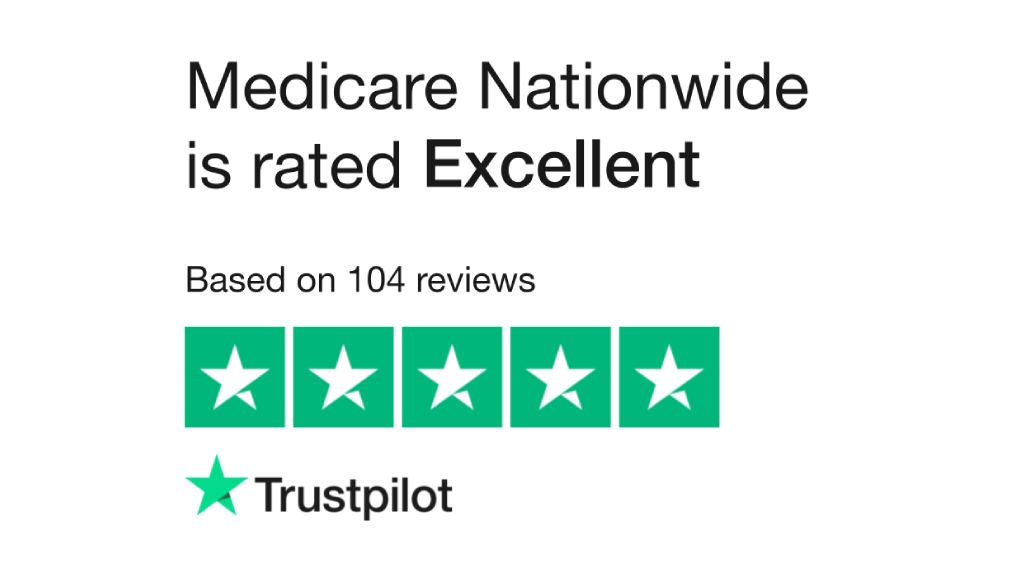What You Need to Know About Medicare Supplements
Traditional Medicare does not cover everything. Certain medical conditions you might expect to be covered such as hearing and vision aren’t part of Medicare. There are also coverage limits and many out-of-pocket expenses.
Traditional Medicare has two major components enhanced by Supplement policies: Medicare Part A and Medicare Part B.
Part A generally covers hospitalization and Part B covers your individual medical providers such as primary care doctors and specialists. Medicare Supplements were created by private insurance companies and standardized by the federal government to provide coverage for those gaps. This is what makes Medicare Supplements important, providing coverage for necessary healthcare components Medicare wouldn’t otherwise make available. If you were used to an employer health insurance product, adding a Supplement to Medicare feels more like what you previously had.
Medicare Supplement plans offer different coverage to close the Medicare gaps. They are Plans A, B, C, D, F, G, K, L, M and N.
The benefits for these can include Part A and B coinsurance coverage, foreign travel coverage, and deductibles, among others.
Plan costs vary among providers and where you live, but generally, Plan F is the most expensive because it is also the most comprehensive. Depending on your geography, some plans aren’t offered in some states.
This appointment is meant to alleviate any concerns and there is no-cost or obligation to make a change.

The Popular Medicare Supplement Plans
As with any insurance product, choosing the plan that best fits your needs can be difficult. With the plethora of options, making a definitive decision is tough.
When considering a plan, review your medical needs, your current and potential medical expenditures and your potential budget for insurance. These factors will help as you sort through the plans.
Plan A, as you’d expect, is the most basic of the plans, and can be limited in what it covers. Because of the limitations, it is one of the least-popular plans. Each plan is built off coverages offered in Plan A. Instead of explaining each policy available to you, here is a quick run-down of the most popular Medicare Supplement Insurance Plans and how they can help you. For a good visual representation of all the plans, check out this Medicare comparison chart for all the Medicare Supplement Plans.
Plan F
Plan F provides the most comprehensive coverage. Policyholders get the following benefits under Plan F:
Part A benefits
- Part A Deductible
- Part A hospital and co-insurance costs up to an additional 365 days after Medicare benefits are exhausted
- Part A hospice care co-payment or co-insurance
Part B benefits
- Part B Deductible
- Part B Coinsurance or Copayment
- Part B excess charges
- Part B preventative care co-insurance
Other Benefits
- First 3 pints of blood used in approved medical procedure
- Skilled Nursing Facility coinsurance
- Foreign travel medical emergency insurance
Because this is the first plan we are discussing, let’s put real numbers to some of these coverages so you can see the impact not having coverage could make to your wallet.
The annual deductible for Medicare Part A in 2025 is $1,676. This is your out-of-pocket expense for the first 60 days of hospitalization. After 60 days, you pay a coinsurance of $419 per day up to the 90th day and it continues on with no out-of-pocket max. That is why a Medicare supplement plan is so important because it provides you generally speaking with an out-of-pocket max. Yes, if you were in the hospital for more than 365 consecutive days you would then have exceeded both your Medicare and supplement insurance coverage and you would have to pay all the costs. This probably would only happen if you fell into a coma. That aside, you would have an out-of-pocket max.
The Medicare Part B annual deductible is $257 in 2025. This may seem small compared to the Part A deductible. It is, but the real cost under B is the coinsurance which is where coverage matters.
Part B coinsurance is different than the deductible. There is a 20% coinsurance under Medicare Part B. For example, if you are sent to a specialist for care, you would pay the first 20% of the charges, and Medicare would pick up the other 80%. This is different than a co-payment, where you would pay a fixed amount for service. For example, if you visited your doctor it would be $20.00. The Plan N which we will discuss later includes co-payments.
Plan F High Deductible Plan
Plan F also provides a high-deductible option. Policyholders need to pay the first $2,800 in medical expenses before coverage begins under this plan. Why do so many choose this plan considering the high potential of out-of-pocket expenses? By taking a high deductible plan, you significantly reduce your premiums and potentially save all or most of the deductible costs in the premium savings.
This may be a good option if you have low medical expenses and if you are looking to save on premium costs.
Plan G
While it isn’t the most comprehensive plan on the list, Plan G is popular among Medicare recipients. Plan G covers everything that is covered under Plan F except for the Part B deductible. What draws Medicare-eligible seniors to this plan is the exclusivity. Since no one is guaranteed acceptance, members with Plan G receive more exclusive access to plan benefits.
As you saw above, the Part B deductible is one of the smallest out-of-pocket expenses you could incur under Medicare. Customers who purchase Plan G will usually more than save the deductible costs in their premiums.
Plan G currently provides the most coverage to new 2021 Medicare recipients. This plan is still great, offering almost the same amount of coverage that Plan F provides except for the Part B deductible. The premium is cheaper than that of Plan F too, saving you some money on Medicare costs. This will probably become the most popular plan as time goes on.
Plan G High Deductible Plan
Just like Plan F, Plan G offers its recipients a high-deductible option. For those unfamiliar with how a high-deductible plan works: Just like Plan F, you will have a lower premium for Plan G if you enroll in the high-deductible option, but obviously a higher deductible.
The deductible changes year to year, so it is best to consult with your provider when looking into this option. Coverage will not begin by your plan until the deductible is met. Once you have paid your deductible by using various medical services covered under Plan G, you begin to receive your coverage.
Plan N
Plan N is the least comprehensive of the three most-common supplement plans of Plan F, G, and N.
Plan N will only cover:
- Part A and Part B coinsurance
- Part A hospice care
- Three pints of blood
- Nursing care coverage
- Part A deductible
- 80% of foreign travel emergency costs
While it doesn’t cover as much as Plan F or Plan G does, Plan N provides great coverage without the premium cost that comes with Plan G or F. The areas where this plan is different than F or G are related to Part B charges. Plan N does not cover the Part B deductible like Plan G. It also does not cover the Part B excess charges.
The cost is the most attractive element of the plan. Make sure you talk with an agent about the potential costs associated with Part B excess charges. You may be able to estimate your annual charges under this line to help you decide if the premium savings are worth it.
Of the three plans, Plan F has remained the winner for many years. But Plan F became no longer available to new recipients of Medicare. After January 1, 2020, Plan G and Plan N are now recommended by insurance carriers to be more competitive for their rate stability.
Why Plan F Has Been the Most Popular Selling Plan for Decades
Before Plan F was changed in January 2020, it was the most popular plan among all seniors. This made sense because it offered the most coverage among supplement plans. With this comprehensive coverage comes the most peace of mind available to Medicare recipients. Baby Boomers could easily be covered in any situation.
Foreign travel coverage is also an amazing perk. If you are someone who frequently travels abroad, having foreign emergency coverage might be of interest to you. After the deductible, you have a lifetime reserve of $50,000.00 paid within the first 60 days of travel. Plans N and G also cover foreign emergency costs, but Plan F covers the once-a-year Part B deductible. This is not a monthly expense. In the case of Plans G and N, the insured would go to their provider until they satisfied their deductible for the year, then it works just like Plan F.
Finally, the high-deductible option was great for some recipients. Those who opted into this could get the same coverage for a lower premium but would need to be responsible for a $2,870.00 deductible. Those who opted into this must reach the deductible before full Plan F coverage kicks in.
This appointment is meant to alleviate any concerns and there is no-cost or obligation to make a change.
What Happened to Plan F?
Medicare Supplement Plan F is no longer available to those newly eligible for Medicare. Why was the most popular Medicare Supplement phased out? This decision was made by Congress in an effort to lower government spending. Plan F covers the Part B deductible, which is what Congress wants to eliminate. This also applies to Plan C, which also covers the Part B deductible.
According to the authors of the legislation, doctor’s visits under Medicare are often abused. When Medicare recipients pay the Part B deductible, they will be more aware of medical costs and think twice about overusing those services. Who knows if this theory is true, but thankfully the Part B deductible is relatively small, and won’t significantly affect a senior’s annual budget.
Remember: Plan F is still available to those who were eligible for Medicare before January 1, 2020. Only those who enter the Medicare system after that date is affected.
You may have a different plan today, but can still upgrade to Plan F. If this applies to you, Plan F is a great choice if you are looking to switch Medicare Supplement plans. Those new to Medicare will not have access to Plan C & F and will need to pick another supplement plan.
Any Medicare Supplement Plan is a Great Choice
Any of these plans are great choices and provide good coverage. If you are new to Medicare after 2020, you won’t have access to Plan F. However, Plans G and N remain great options.
Our recommendation is to speak to a broker with experience and access to multiple companies like those at Medicare Nationwide. An experienced agent will assess your needs and make recommendations. If you talk with an agent, make sure they carry more than one company.
Once you narrow down the plan you want to choose, you need to pick the company. Even though coverages remain the same among companies, pricing can vary from company to company. Many also offer side benefits. This is one reason we have contracted with multiple insurance companies. It allows us to give customers more options. We get to do the shopping for the customer and present them with the best coverage at the best value.
Prefer to chat by phone? Give us a call at 1-888-559-0103.

